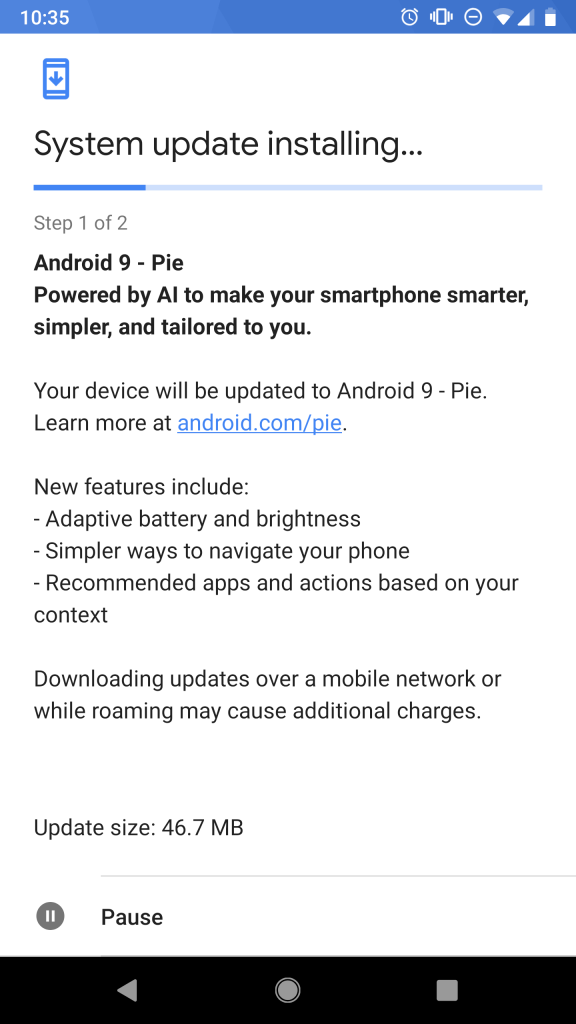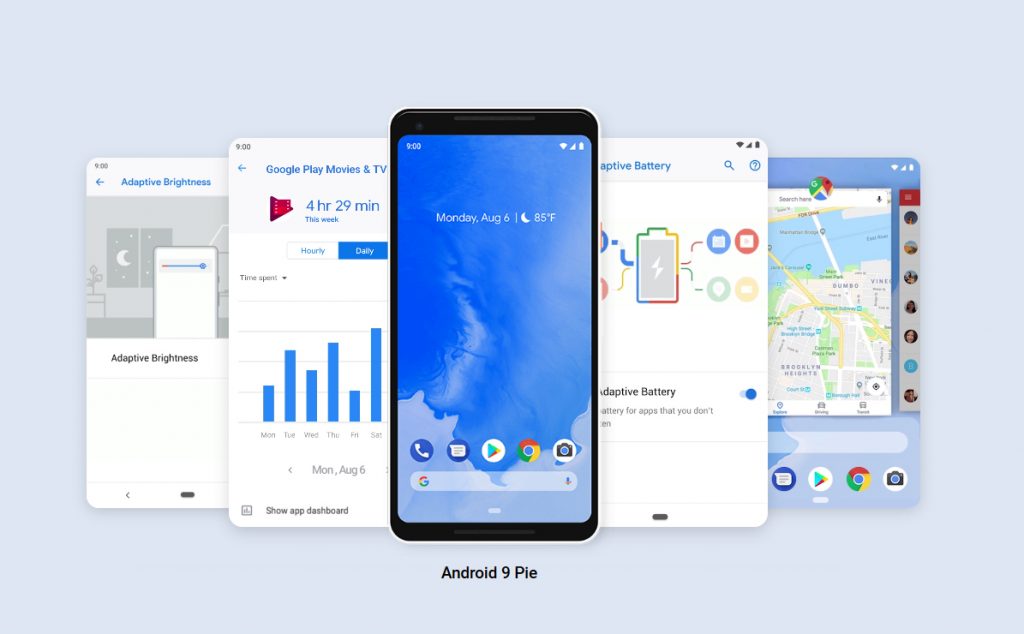Google has finally unveiled what the P stands for in its latest mobile operating system, unleashing Android 9 Pie on Pixel handsets. The update includes many of the features discussed during its time in beta, such as the gesture-based navigation system, an AI-enhanced user interface and, at some point in the near future, the Digital Wellbeing dashboard.
Android Pie was released into its beta stage under the name of Android 9.0 back in March, available for testing on a variety of smartphones. Google has revealed that all devices that participated in the beta test will receive the full update in Autumn, including the Nokia 7 Plus, OnePlus 6, Oppo R15 Pro and many others.
“We’ve built Android 9 to learn from you—and work better for you—the more you use it,” explains Sameer Samat, VP of Product Management for Android & Google Play. “From predicting your next task so you can jump right into the action you want to take, to prioritizing battery power for the apps you use most, to helping you disconnect from your phone at the end of the day, Android 9 adapts to your life and the ways you like to use your phone.”
Google has attempted to tailor the new operating system to each user with upgraded Adaptive Battery and Adaptive Brightness features. The device learns how you use your phone and under what conditions, automatically adjusting parts to preserve battery and prevent eye strain.
Its new App Actions feature will also predict what it expects your next action to be via highlights, to make things quicker in your daily life. This is shown by bringing up your last played playlist when headphones are plugged in, or changing its displayed applications depending on your location.
Sadly, Digital Wellbeing features aren’t available on launch, instead officially arriving for Pixel phones later this year. Digital Wellbeing is intended to help users learn how to use their phone and make simple adjustments based on where they are spending their time navigating. This can be from setting time limits to move onto another task, take a break or going to bed.
Slices is another feature that didn’t make the cut on release but will be available later this year, giving the user a preview of an application before it’s booted. Google gives the example of Uber competitor Lyft, which will tell users how far away the nearest driver is, its prices and the ability to call all without launching the application.
So far, Android 9 Pie’s beta has been fairly well received with the only criticisms directed at its Gestures system. While attempting to streamline navigation of the user interface, Android Gestures have seemingly fallen short of those introduced into Apple’s iPhone X, with many users opting to turn the option off within the settings.
As previously stated, Android 9 Pie is only available for Pixel handsets at the moment, rolling out to Sony Mobile, Xiaomi, HMD Global, Oppo, Vivo, OnePlus, and Essential, as well as all qualifying Android One devices at the end of Autumn.
KitGuru Says: It turns out the “bug” I thought I experienced was simply janky navigation options I wasn’t aware of. I can’t say I’m a fan of everything in Android 9 Pie, but most changes take a small adjustment period. Are you looking forward to getting your hands on the latest operating system?
 KitGuru KitGuru.net – Tech News | Hardware News | Hardware Reviews | IOS | Mobile | Gaming | Graphics Cards
KitGuru KitGuru.net – Tech News | Hardware News | Hardware Reviews | IOS | Mobile | Gaming | Graphics Cards




